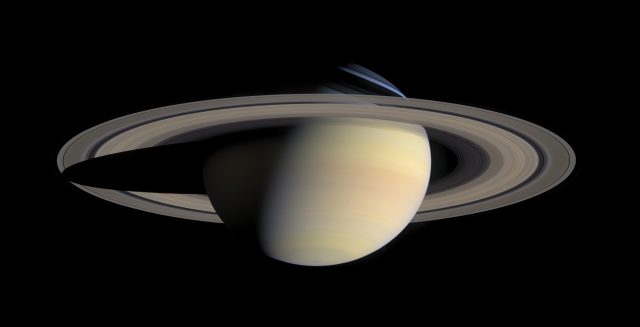Saturn’s inner moons may have formed only recently, from a giant ring
Ars Technica » Scientific Method 2016-03-25

Saturn's moons push and pull on its fluid, making it bulge around the middle. (credit: NASA)
It's common to think of the solar system as a fairly static place. Yes, everything is moving around all the time, but the same basic system of planets and most of their moons seems to have more or less existed as-is since the relatively early days of the solar system. Earth’s Moon, for example, is thought to have formed less than 100 million years after the solar system coalesced, coming into existence when Earth collided with a Mars-sized body. And so it has gone for the last 4.5 billion years.
In contrast, a series of observations suggests some of Saturn’s moons may be mere 100 million years old. That is the theory put forth in a new paper published Thursday in the Astrophysical Journal, authored by scientists from the SETI Institute and the Southwest Research Institute. The researchers believe, based upon observations made by the Cassini spacecraft, that the interior moons could only have existed in their relatively pristine orbits for a short time. “I think we are at a point where we can confidently say that the inner moons are not as old as the planet,” Matija Ćuk, lead author of the new research paper, said in an interview.
Saturn has a complicated system of at least 62 moons in addition to its famous rings, making it the busiest planetary system in the solar system. Titan, the largest and best-known of Saturn’s moons, is covered in exotic hydrocarbon seas. But equally interesting to scientists is one of its inner moons, the much smaller Enceladus. Cassini found the moon to have geysers at its southern pole, blasting water from its interior into outer space. Since then, scientists have wondered whether life may exist in the warm, interior oceans of Enceladus. Ćuk and his colleagues, Luke Dones and David Nesvorný, have an answer that astrobiologists may not like.